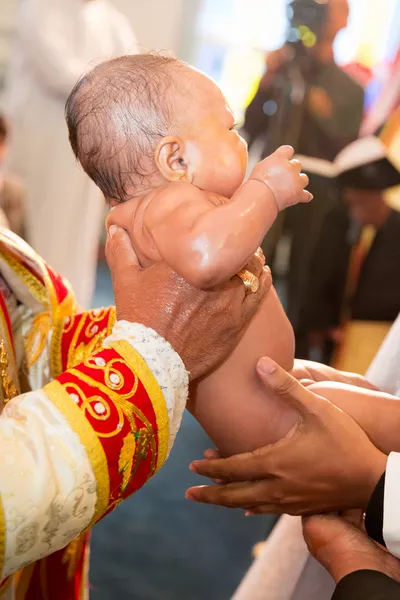
Infant baptism is a sacrament practiced by the Oriental Orthodox Church, signifying the initiation of infants into the Christian faith. This study explores the theological underpinnings, biblical foundations, and significance of infant baptism within this tradition.
Introduction
Infant baptism has been a long-standing practice in the Oriental Orthodox Church, reflecting a theological understanding of baptism as a means of grace, entrance into the Christian community, and the beginning of the spiritual journey in Christ. It is rooted in the broader Christian tradition’s interpretation of Scripture and the teachings of the early Church Fathers.
Theological Underpinnings
- Baptism as Incorporation into Christ
-
- Baptism is the sacramental act through which individuals are incorporated into the Body of Christ. It signifies the washing away of original sin and the beginning of new life in the Holy Spirit.
- The Role of Faith and Community
-
- In the case of infant baptism, the faith of the Church and the believing community plays a crucial role. The parents and godparents profess the faith on behalf of the infant, committing to raise the child in the teachings and life of the Church.
Biblical Foundations
- Household Baptisms
-
- Acts 16:15, 33: These passages recount the baptism of Lydia’s household and the Philippian jailer’s household, respectively. While the text does not explicitly mention infants, the reference to entire households being baptized suggests including all members, regardless of age.
- Household baptisms in the New Testament support the theological rationale for infant baptism, emphasizing the corporate nature of faith and the inclusion of all family members in the community of believers.
- Jesus and Children
- Mark 10:14: “Let the children come to me; do not hinder them, for to such belongs the kingdom of God.”
- Jesus’ welcoming of children and His declaration regarding their place in the Kingdom of God underpins the practice of infant baptism. This passage highlights the openness of God’s covenant to all, including infants, affirming their full membership in the Church.
- Circumcision as a Covenant Sign
-
- Colossians 2:11-12: Paul parallels baptism with circumcision, the sign of the covenant in the Old Testament. Just as circumcision was performed on infant boys as a sign of inclusion in God’s covenant people, baptism is seen as the new sign of the covenant, marking the believer’s entry into the New Covenant community.
Significance of Infant Baptism
- Grace and Salvation
-
- Infant baptism is viewed as a means of grace that initiates the child into the life of salvation from the earliest possible moment. It reflects the belief in God’s prevenient grace—grace that works in our lives before we know it.
- Spiritual Growth and Nurture
-
- Following baptism, the child is nurtured within the faith community, learning to grow in the knowledge and love of God. This process underscores the communal responsibility for the spiritual formation of its members.
- Continuity of Faith
-
- Baptizing infants demonstrates a continuity of faith, passing on the Christian heritage from generation to generation. It embodies the covenantal promise of God’s faithfulness to His people.






